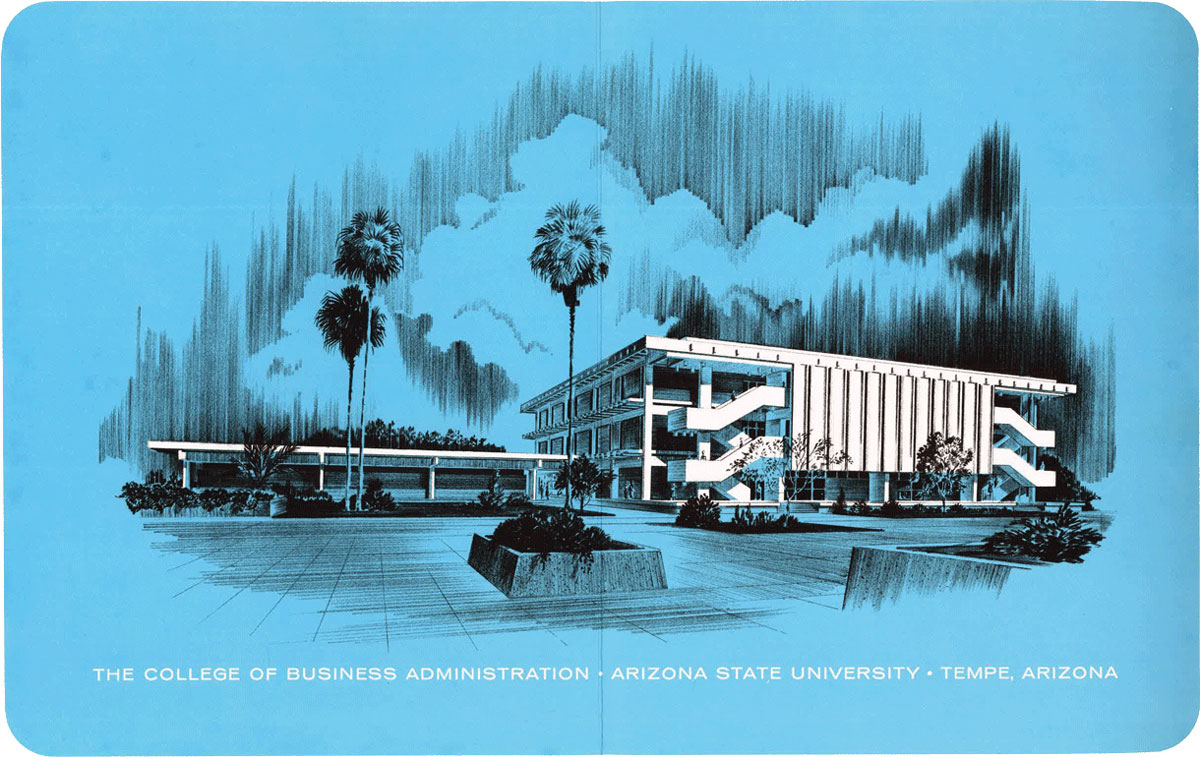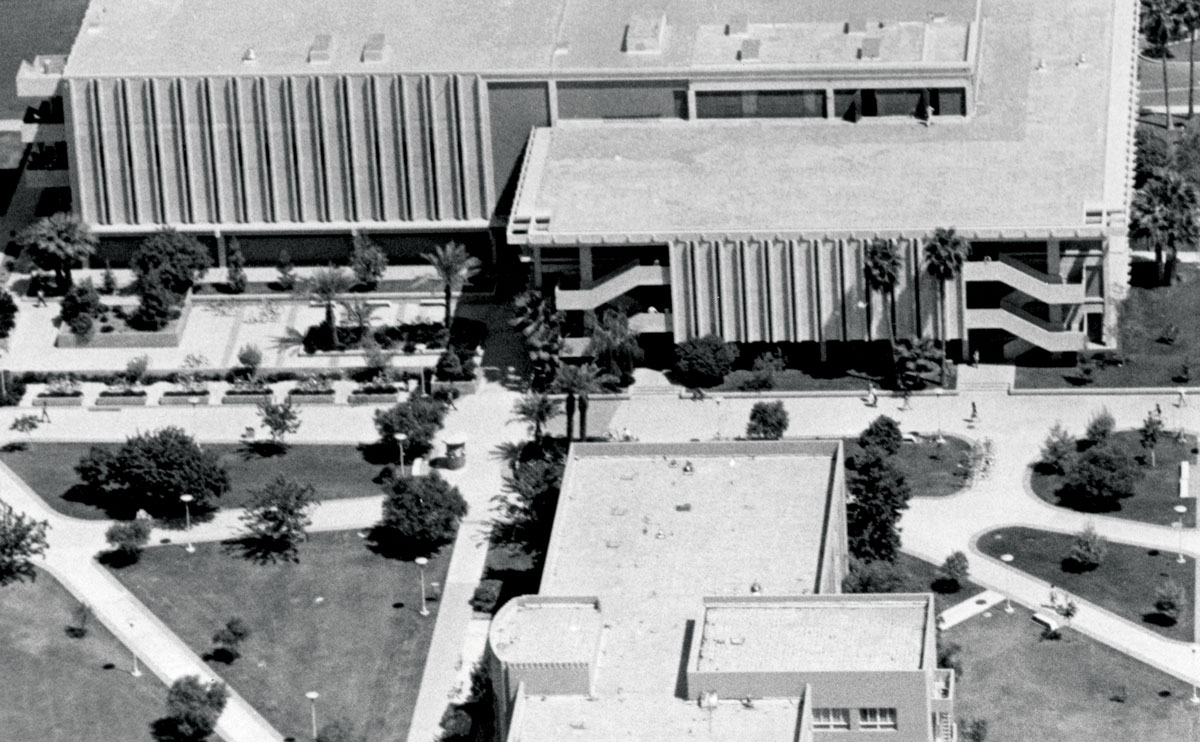ALL THINGS WPC

y the time the BA building was dedicated in 1968, the W. P. Carey School — then known as ASU’s College of Business Administration — already needed more space. Dedicated in 1971, an addition would make room for more students, faculty, and staff, and expand the building to over 115,800 square feet. Travel back in time with us to celebrate the past and present of a favorite W. P. Carey facility on ASU’s Tempe campus.
Memories from a previous era
Vic Wickersham (MBA ’72) first visited Tempe for summer sessions from 1968 to 1969. During his first summer at W. P. Carey, he met the woman who would later become his wife while standing in line to pay their dorm fees for Palo Verde. The couple celebrated 50 years of marriage last year!
Wickersham started his MBA at ASU in 1970 and was one of the first students who took courses in the Business Administration addition. He was pleasantly surprised when he first saw the campus and the BA building. “The architecture was nothing like I had ever seen in Oklahoma,” he says. “I still remember how shiny and new the building felt.”
One particular view, now blocked by McCord Hall, never left his memory. “I can picture walking up the south stairs on the way to class, and being able to see the Superstition [Mountains] in the distance.”
The balmy temperature in Tempe took some getting used to. Luckily, the BA building had precautions to make it cooler. “One of the unique things in the first-floor classrooms was the blue-tinted windows,” recalls Wickersham. “For me, the windows were the perfect feature, since I was slowly adjusting to the summer heat.”
Besides the comfortable temperature in the classrooms, Wickersham also remembers the teaching environment. “The acoustics in each classroom were spotless. The environment was perfectly crafted for learning.
“I’ll never forget the facilities and the personal attention from the faculty at W. P. Carey — one of my favorite professors was Dr. John Toodle,” he says. “Those memories stayed with me as I started my career in government all those years ago.”
Shifting with the times
Assistant Director of W. P. Carey Facility Services Tim McLaughlin started at ASU in 1989. Since then he’s seen a lot of changes to the Business Administration building — including substantial renovations and general improvements.
The school has expanded the number of classrooms to keep up with overall growth. “There are a lot more classrooms now than there were in 1972,” emphasizes McLaughlin. “Back then, classrooms had chalkboards, and slide and transparency projectors. The rooms also had accordion-style partitions, perfect for creating two distinct classrooms.”

Across the BA building, all restroom fixtures were upgraded to low-flow devices, and all classroom and office spaces were upgraded to energy-efficient LED lighting in 2016. Nods to ASU’s sustainability mission can also be found on the roof. Solar energy was first implemented at ASU in 2004. Today, on-campus solar installations — including panels atop the BA building and McCord Hall — generate enough electricity to power more than 8,000 Arizona homes for one year.
“The building has evolved very well over time,” McLaughlin says. “I’ve seen classrooms go from having no technology to every possible type of technology available for learning. In 2021, everything is Zoom-compatible.”
McLaughlin can’t forget certain oddities throughout the building. “One room has a tiny closet that connects to a classroom,” he says. “Visitors can go in one door and see the storage space. There you can open the door, leave the space, and venture to another classroom.”
The area has seen other changes, too. McLaughlin is happy to give more insight. “The Undergraduate Advising Office was located where Student Engagement is now. The office used to be just one big open room with bank-teller countertops. It operated kind of like a waiting room,” he explains.
Due to the layout, students had no choice but to attend their scheduled appointment. “If advisors wanted to get the attention of students, they would call students over the loudspeakers,” explains McLaughlin. “This practice led to plenty of embarrassment from students, but would quickly capture their attention.”
Where business is personal
Today, there are three business buildings located in the very heart of ASU’s Tempe campus. Featuring an open courtyard, the buildings create a sense of community and offer welcoming spaces where W. P. Carey students learn, connect, and thrive. On most days, you can find students studying, relaxing, or enjoying a cup of coffee at Starbucks while waiting to attend their next class.
What’s your favorite W. P. Carey memory? Share stories from the classroom and beyond with editor.wpcmagazine@asu.edu to be featured in a future issue.